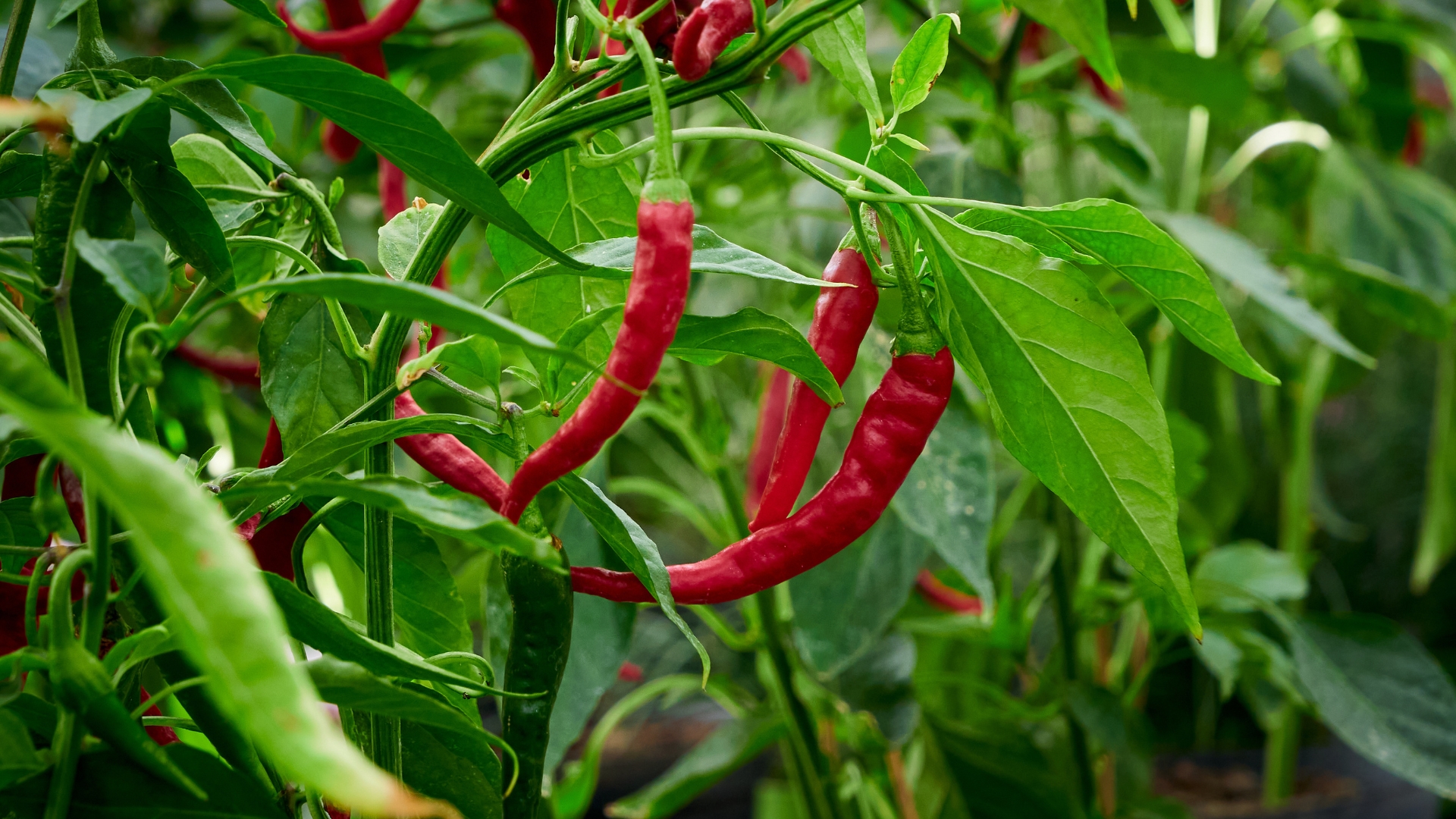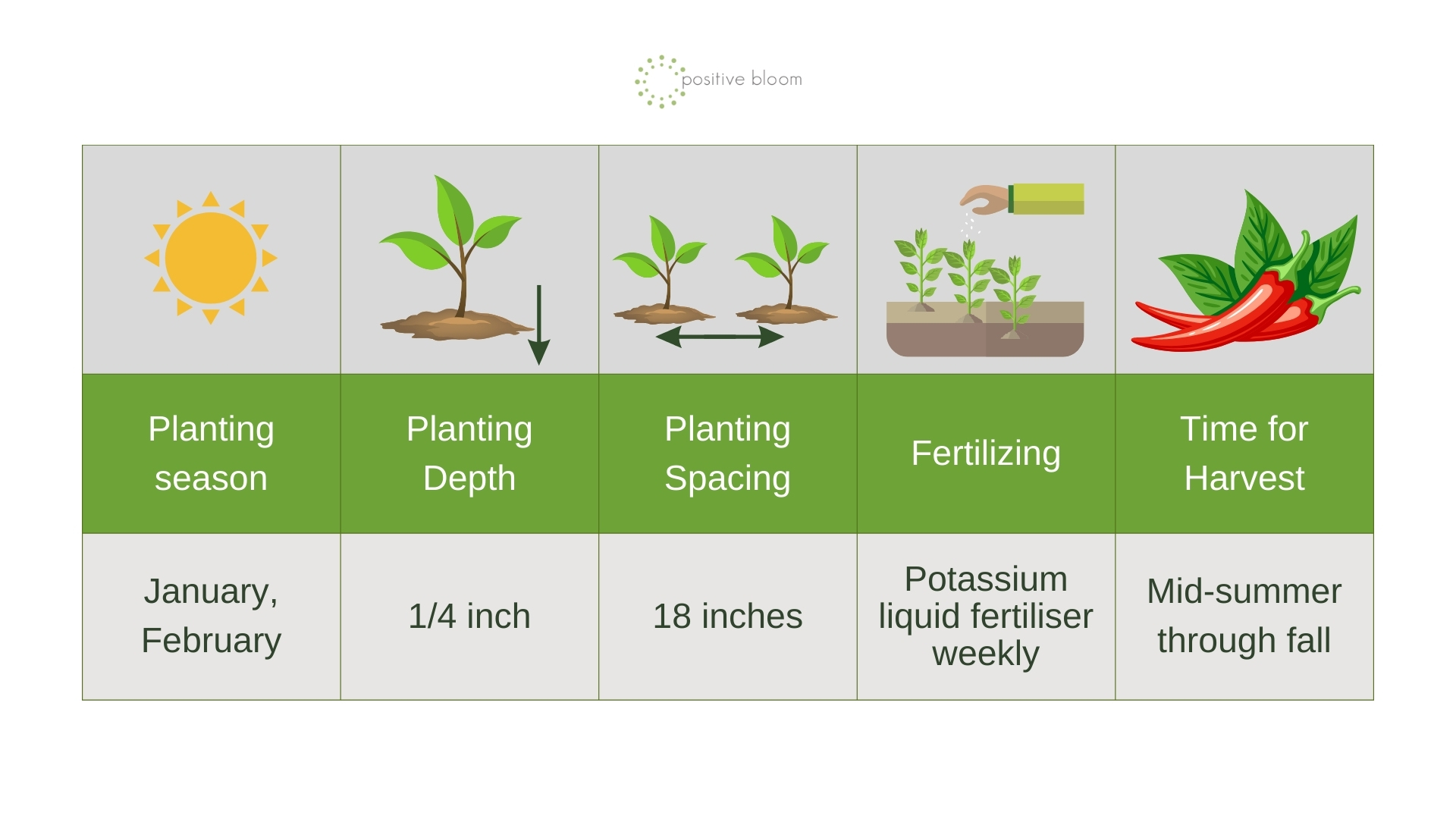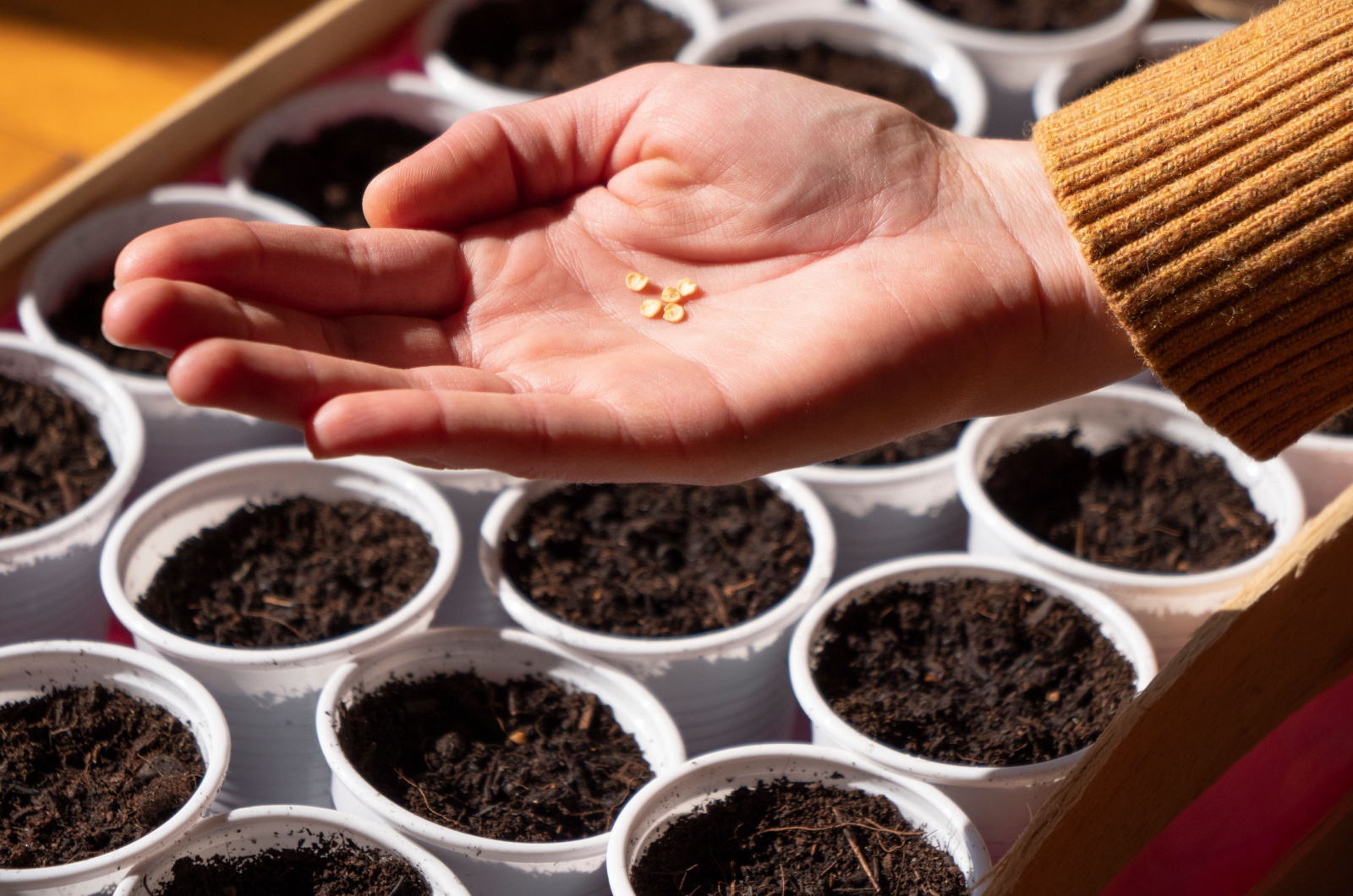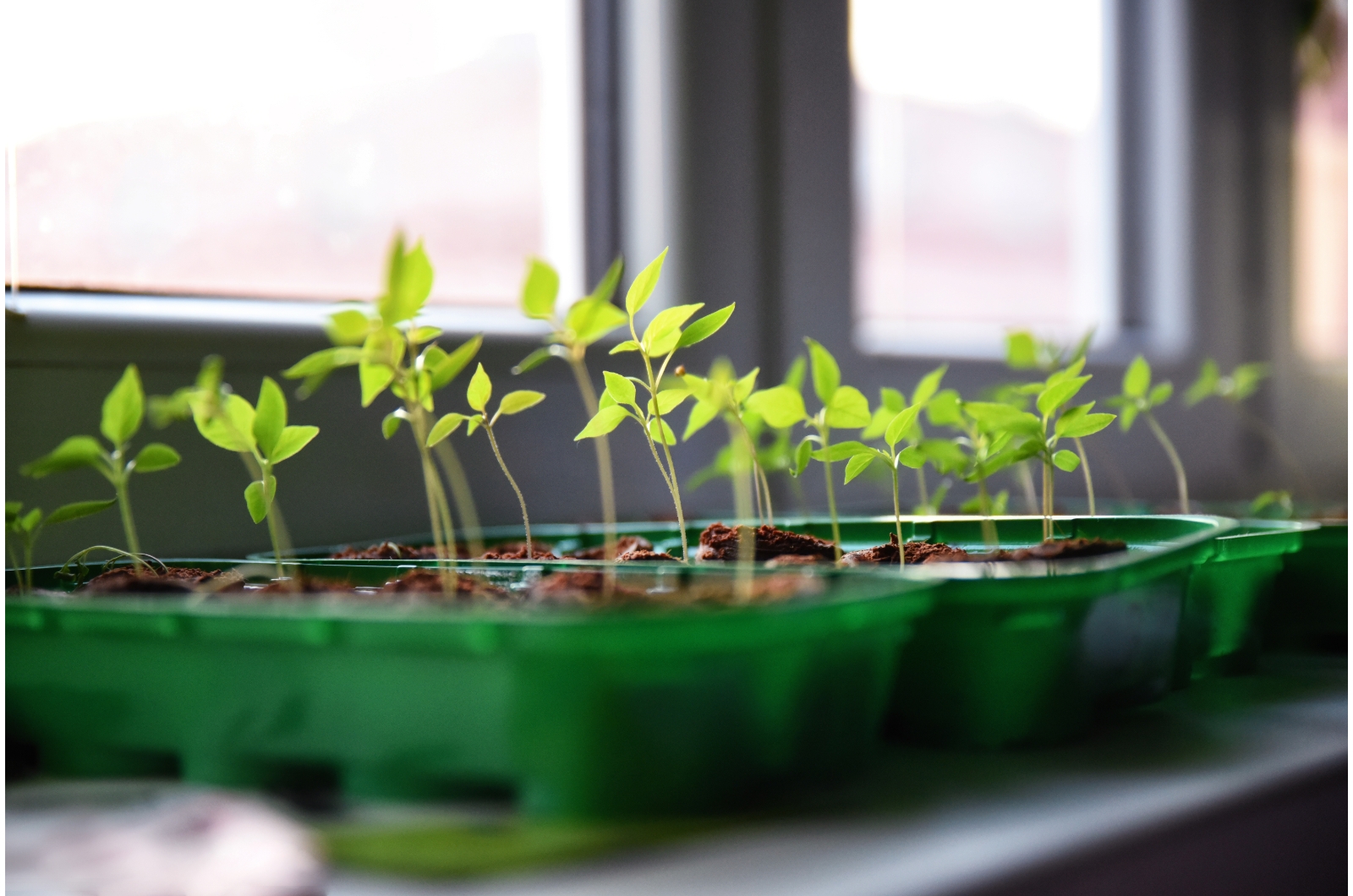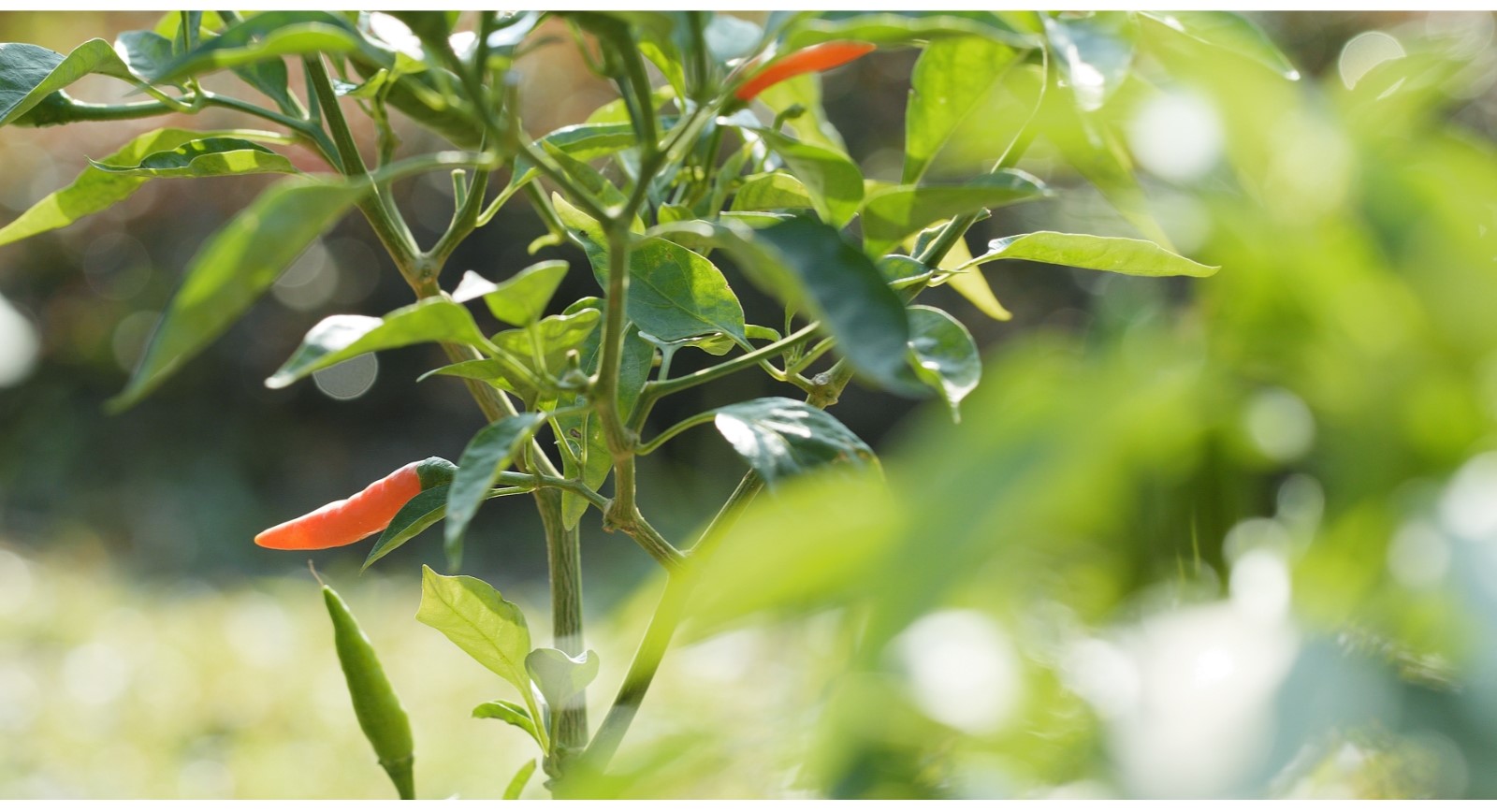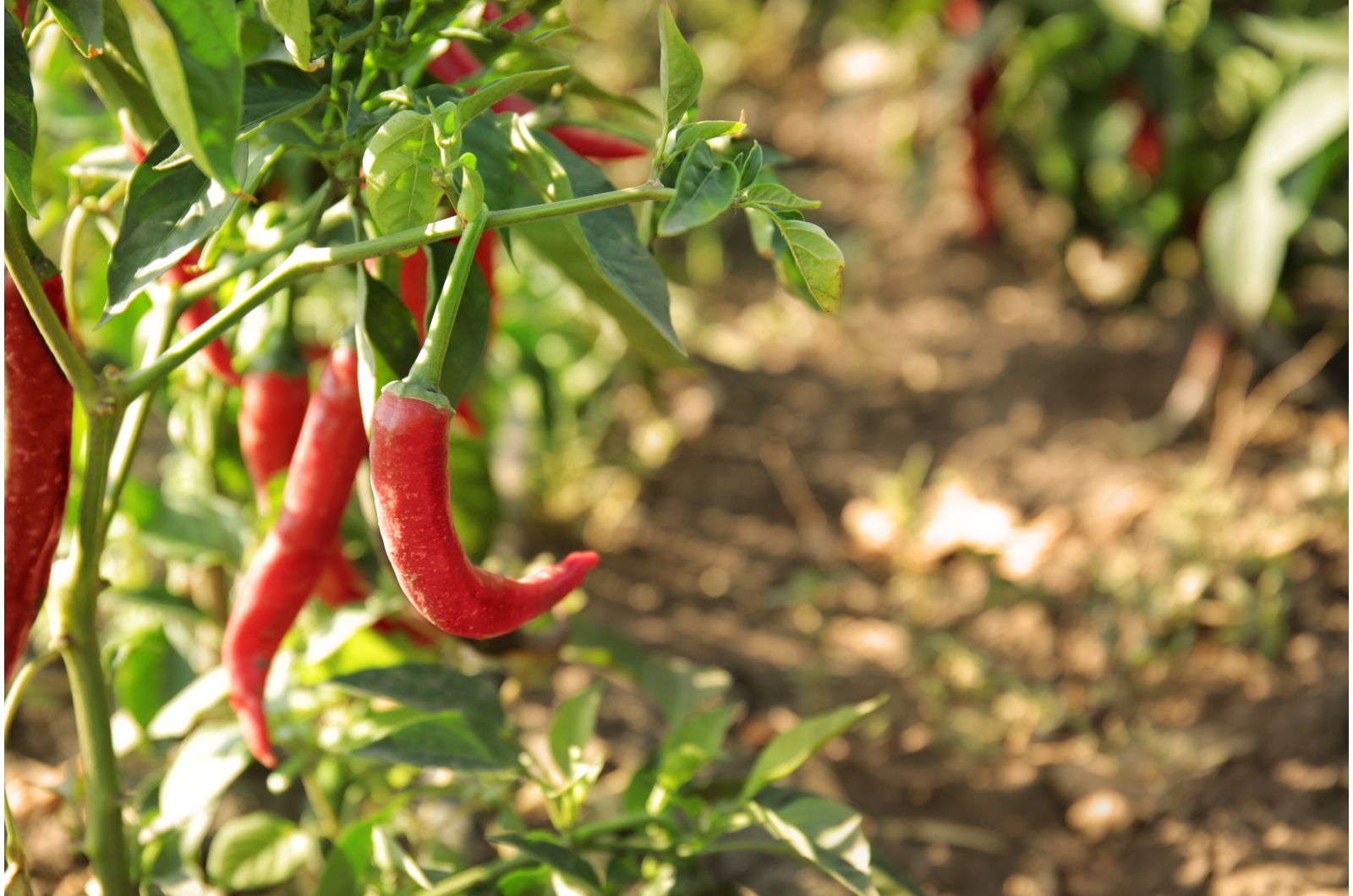We mainly link chilli peppers to hot and spicy dishes, but there are various species to choose from and some aren’t spicy at all.
They come in various colors, shapes, and sizes but one thing they all have in common is that they’re super easy to grow.
You can start them directly in the ground or even indoors if you have a limited space. The essential thing is to provide these flavorful plants with the ideal conditions.
In this article, I’ll show you how to grow chilli peppers, from planting to harvest!
Let’s get started!
A Complete Growing Guide
As mentioned, there are many types of chilli peppers you can grow, so the first step is to select a variety.
Habanero, banana peppers, and jalapenos are just a few of the most famous varieties.
There are two ways of starting these peppers: from seeds or young transplants purchased in nurseries or garden centers.
How To Start Chilli Peppers From Seeds
It takes approximately 150 days for all the chilli plant growing stages to finish. This is a long period, which means the sooner you start, the faster you’ll enjoy the harvest.
The only problem with early sowing is that you’ll most likely need to ensure additional heat and artificial lighting to promote germination and encourage the growth of your seedlings.
One of the most common techniques for chilli seed starting is pre-soaking them to increase the germination rate. Put the chilli seeds in warm water and allow them to soak overnight before planting.
Think of it as a spa treatment for your seeds to aid in softening the seed coat.
Take some smaller pots or seed trays, fill them with seed-starting compost, and sow your chilli seeds at a depth of about ¼ inch.
Chilli seeds require moist growing substrate and temperatures of around 70 degrees Fahrenheit to germinate successfully.
A heated greenhouse provides the seeds with the best conditions but a south-facing windowsill and some technology can also do the work.
Consider investing in heat mats because they’ll ensure the warmth chilli seeds need for germination. To ensure moisture for your chilli seedlings, put a humidity dome or a plastic bag over the seeds.
You can transplant your chilli pepper seedlings when they’re approximately 6 inches tall. If you live in USDA zones 9 through 11, you can grow your chilli peppers outdoors. Make sure to harden off chilli seedlings before planting them in the ground.
Where To Plant Chilli Peppers
Remember that these are sun-loving veggies, so your main goal is to select a location in your garden that receives 6-8 hours of direct sunlight daily.
The daytime temperatures for your chillies should range from 70 to 80 degrees Fahrenheit for the healthiest development.
You can grow them in south-facing parts of your garden or keep them in polytunnels or greenhouses. If you can’t ensure any of these, grow your chilli peppers in containers.
You can pot jalapenos, cayenne peppers, or any other varieties and have a fruitful harvest.
A moisture-retentive, fertile, and fast-draining growing substrate is the key to healthy chilli pepper growth.
If you want to boost nutrient levels in the soil, you can amend it with compost or well-rotted manure.
The spacing between each chilli pepper plant should be about 18 inches and the rows should be 2 feet apart.
If you decide to grow your chillies in a container, make sure to select only containers with drainage holes and fill them with quick-draining soil mixes.
Maintenance Tips
Regularly check the soil of your chilli plants and make sure it’s always moist. Both dehydration and overwatering can damage your chillies, so wait until the soil dries out an inch or two below the surface and then add water.
Your chillies will most likely need about an inch of water weekly, and you should only water them around the base of the plant.
These veggies are heavy feeders, so first add nitrogen-rich fertilizer after planting your chillies. Once you see chilli flowers and fruits, start adding phosphorus and potassium-rich fertilizer to enhance ripening.
You can expect your chilli peppers to be ready for harvest in mid-summer. Even though you can pick them at different growth stages, the mature ones are the spiciest.
When harvesting your banana peppers or any other variety, use sharp and clean scissors to avoid damaging the plant.
And remember, regular harvesting will encourage the plant to produce more of its flavorful fruits!

